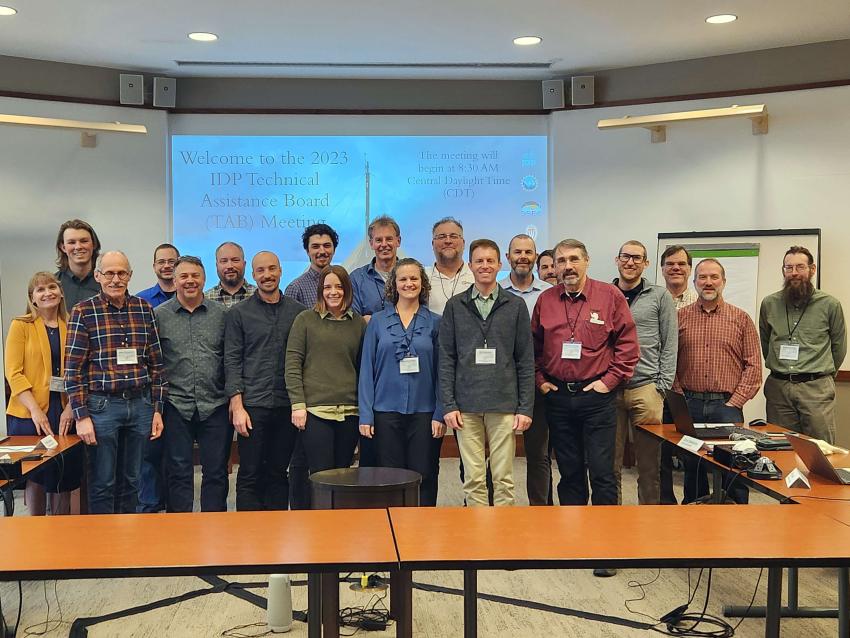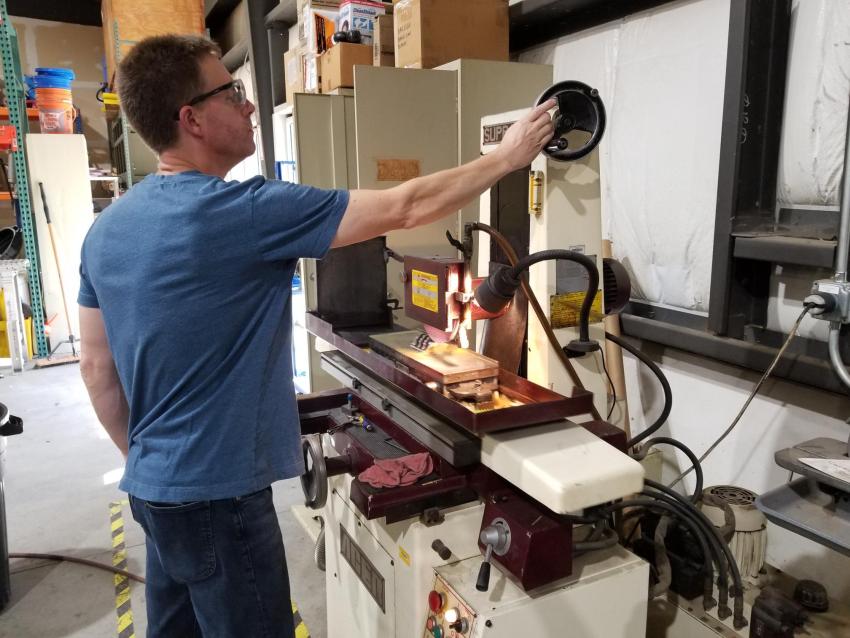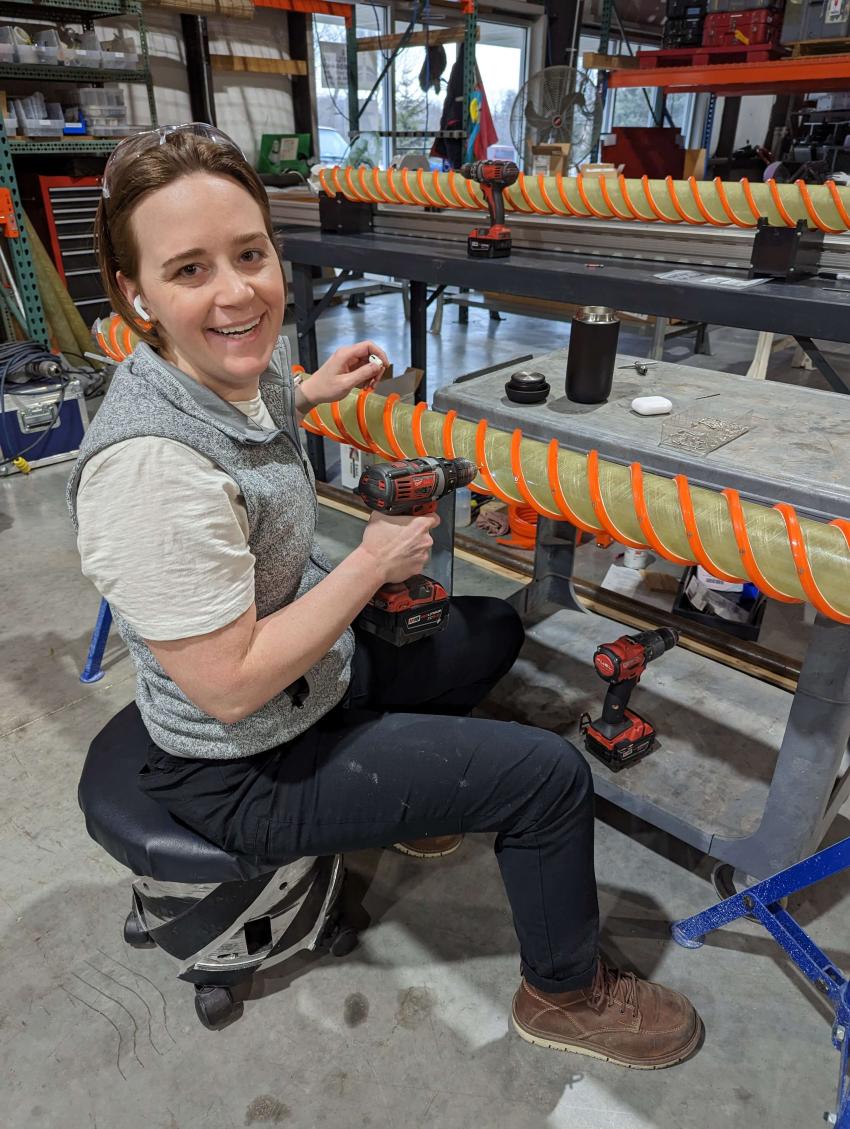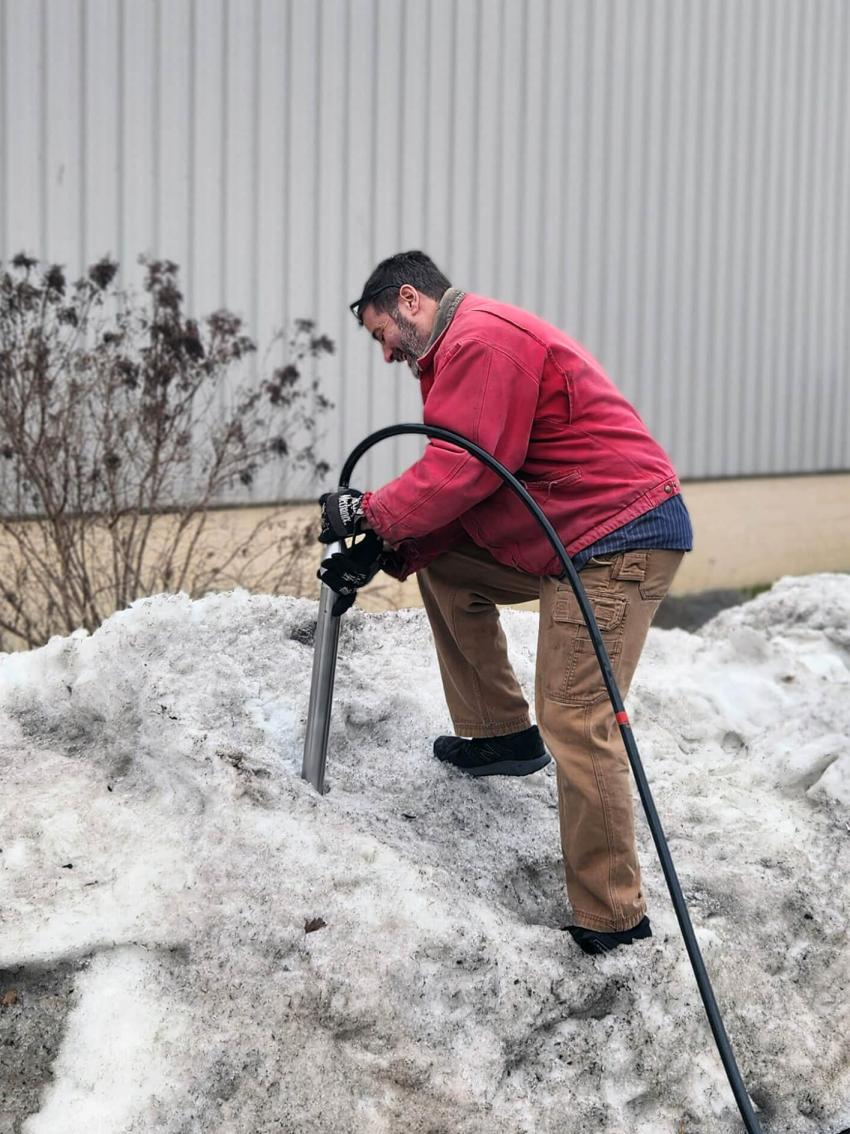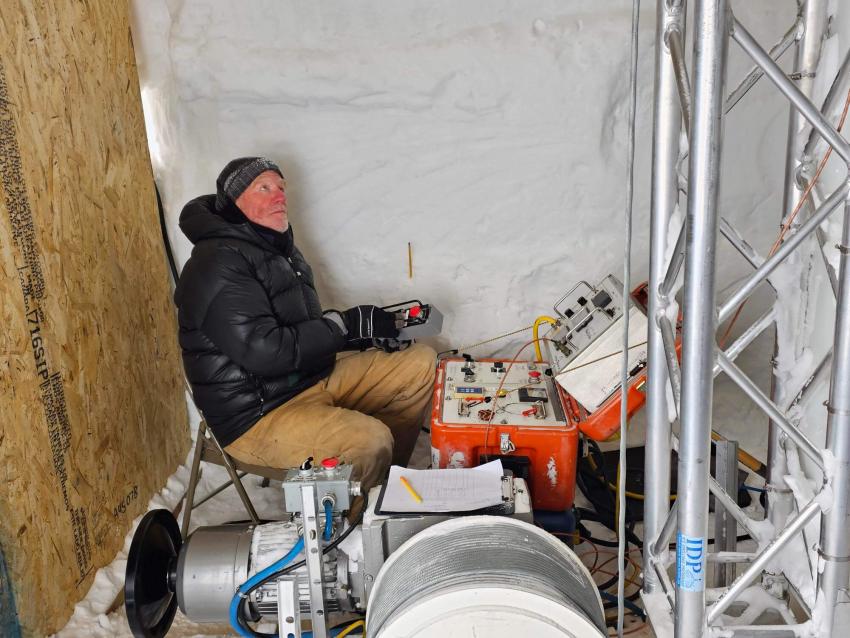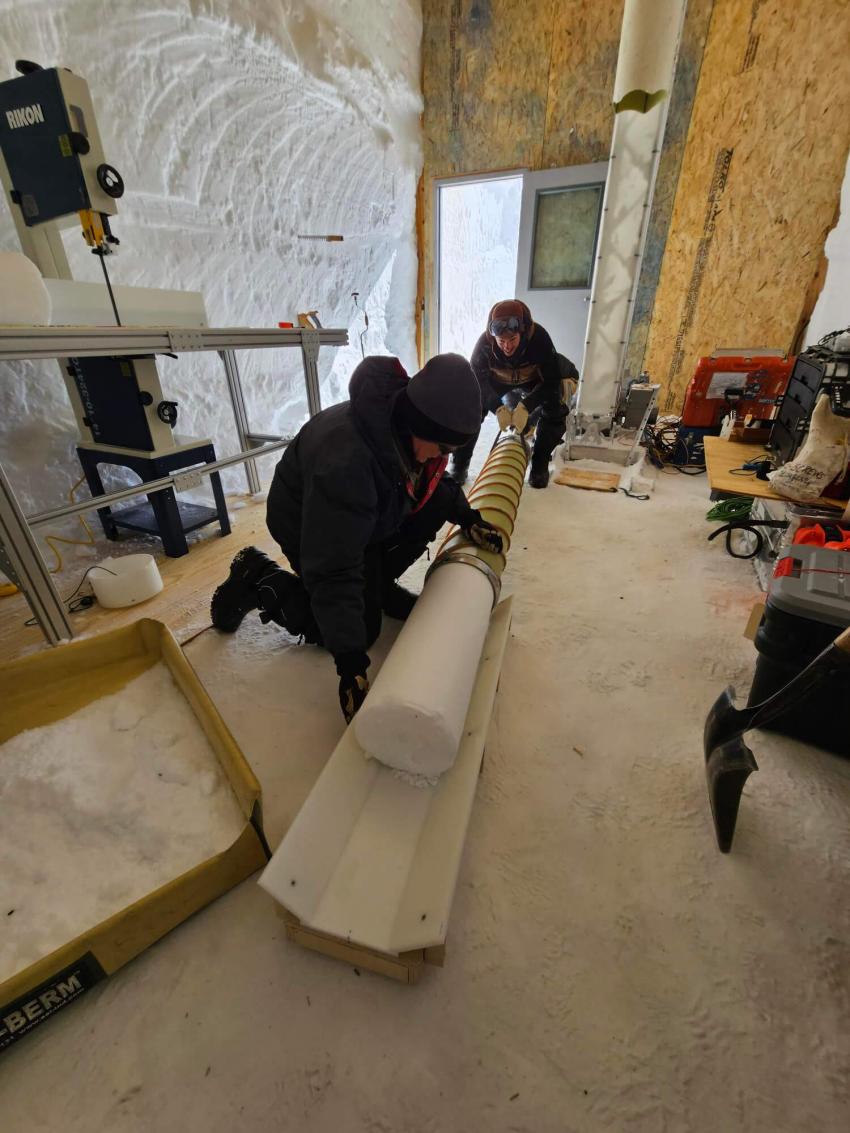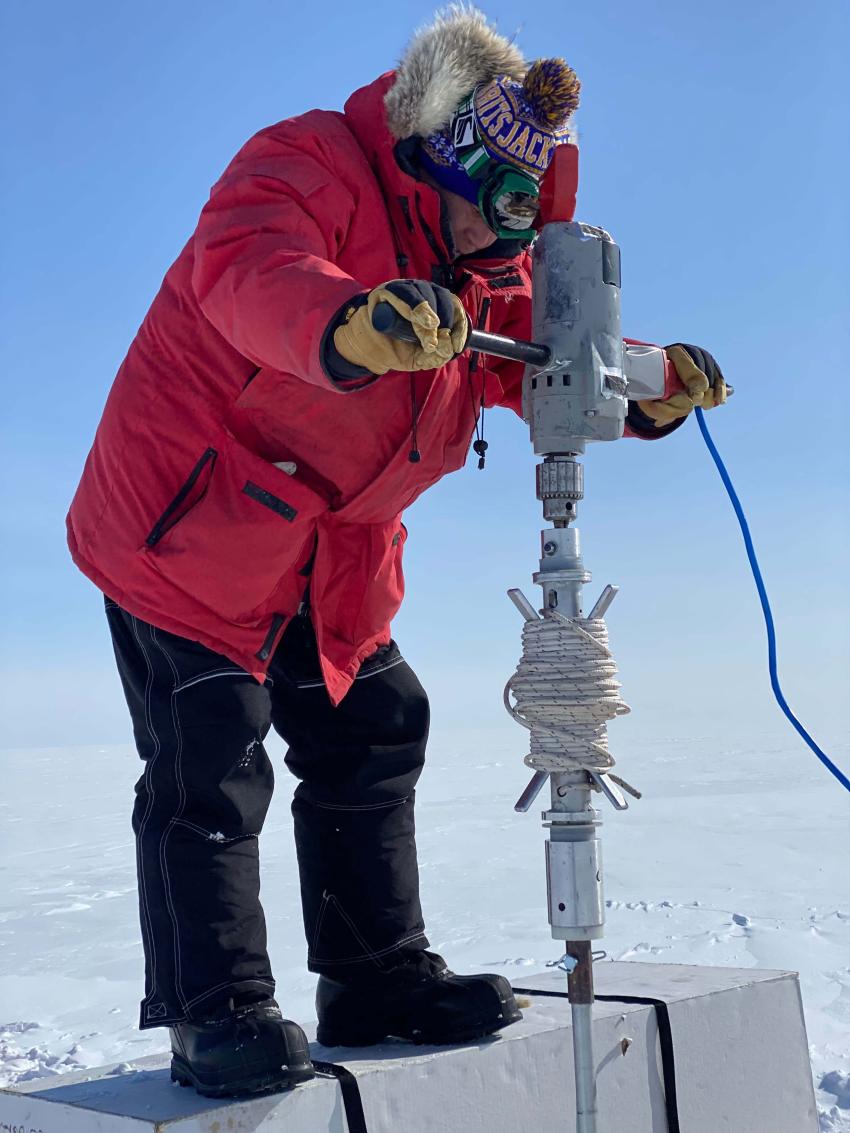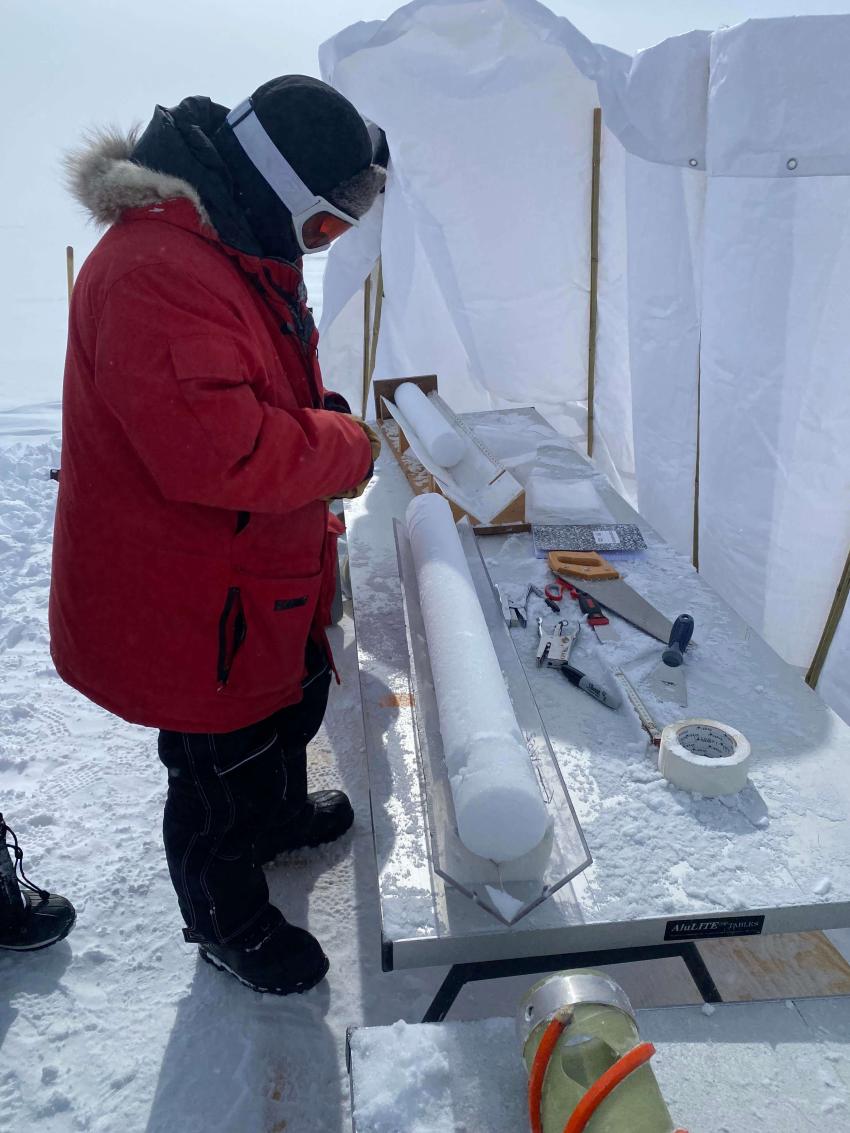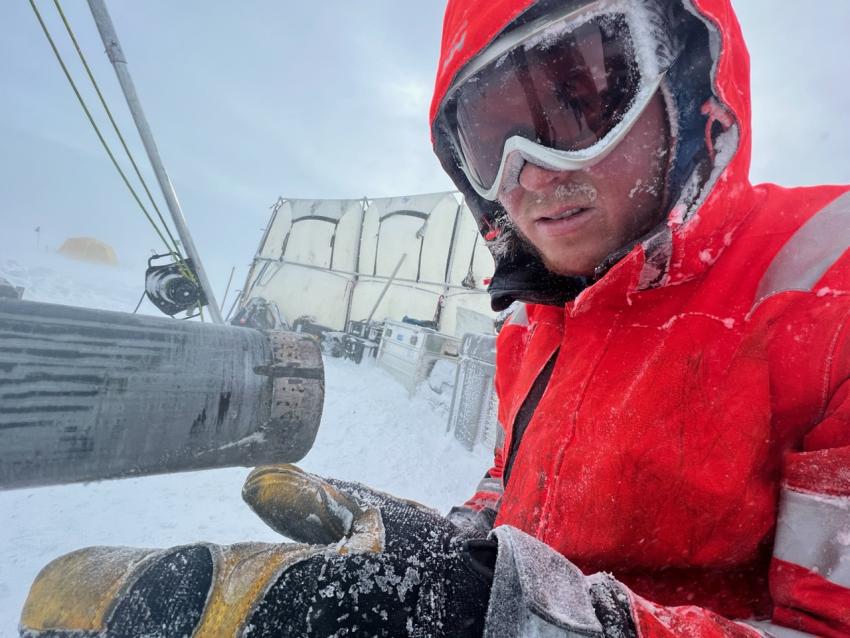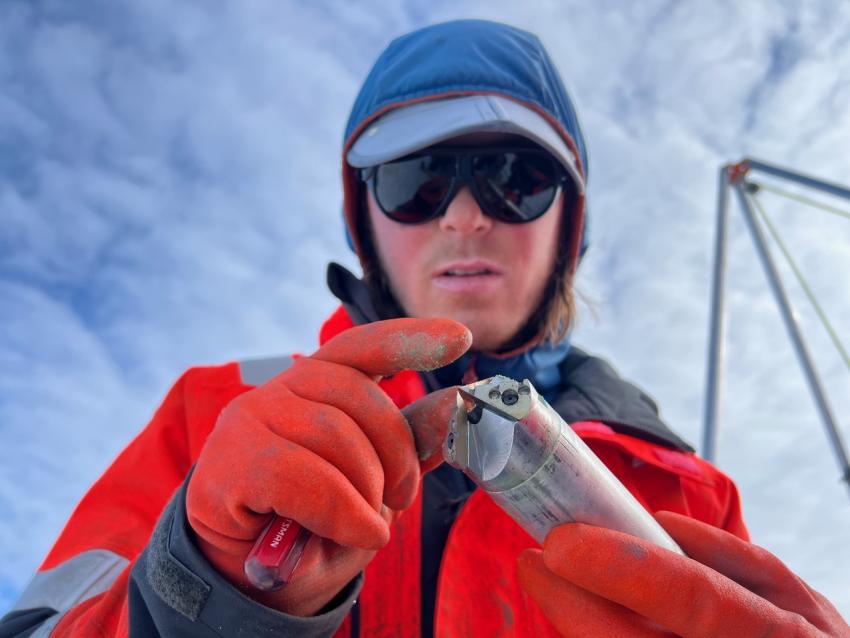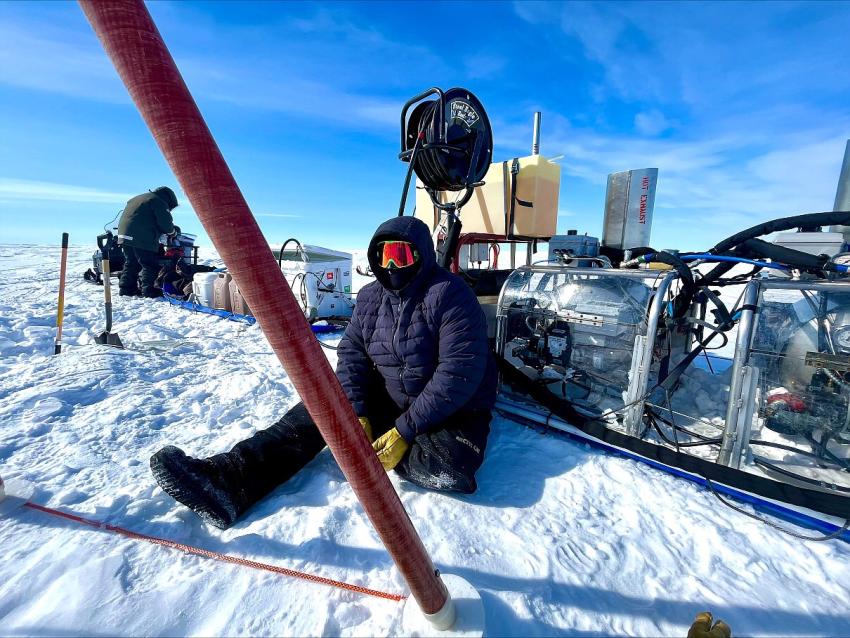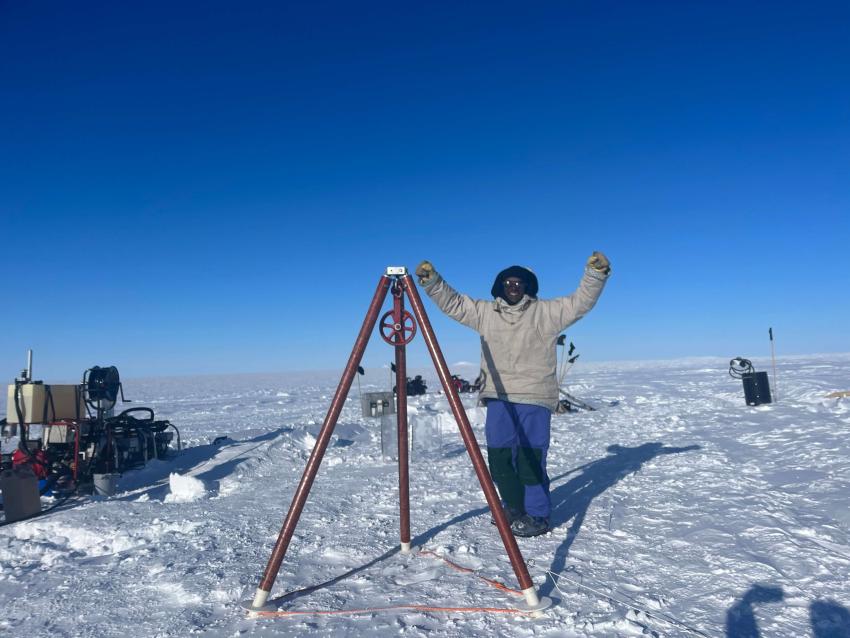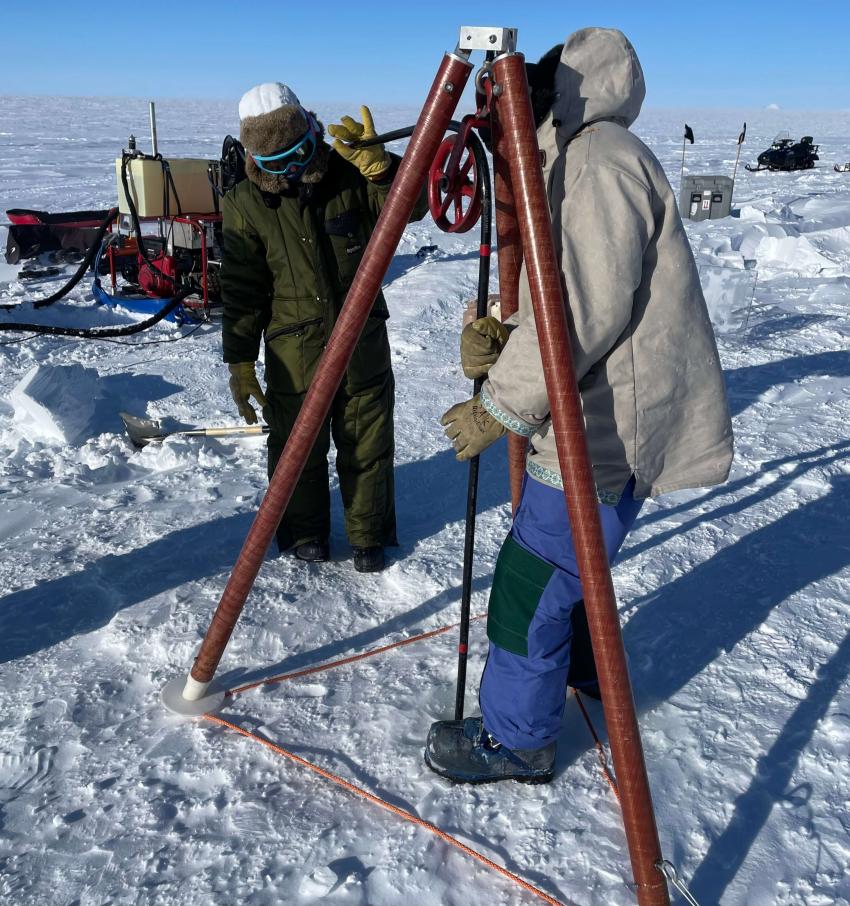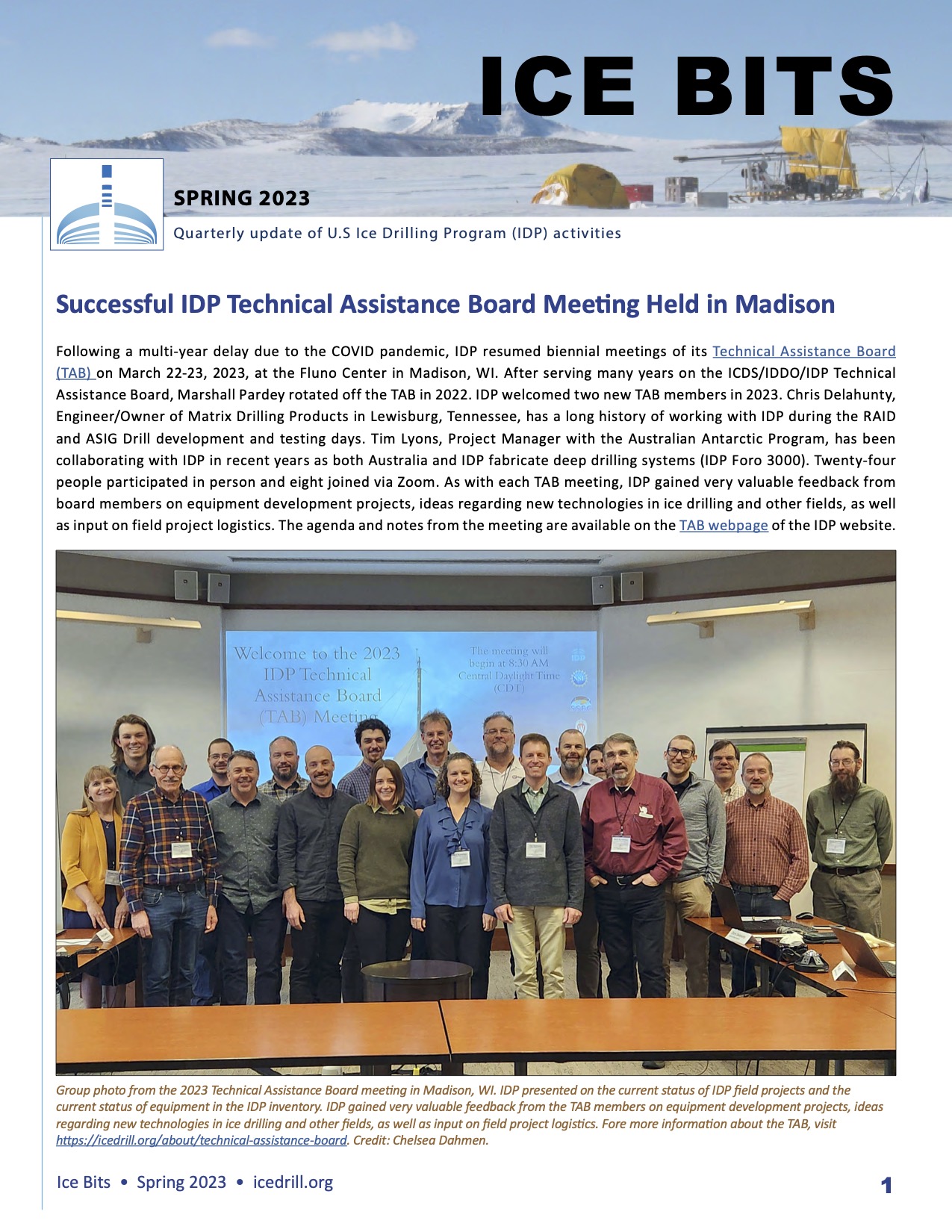(6) The Collaborative Research: AON Network for Observing Transformation of the Greenland Ice Sheet Firn Layer project (PIs Joel Harper and Toby Meierbachtol; NSF award numbers 2113391 and 2113392) will establish a network of instrumented sites to observe transformation of the Greenland Ice sheet’s percolation zone firn layer. Using the IDDO Hand Auger and Sidewinder, repeat cores will be collected over five years to track density and ice content changes, and instrumentation installed in core holes will monitor firn temperature evolution and compaction of the firn layer. The data from these efforts will be of high value to scientists focused on changes in storage capacity of the firn layer, process details of meltwater infiltration in cold firn, and the influence of firn compaction and melt on satellite-observed ice sheet elevation.
(7) The Significance of Ice-loss to Landscapes in the Arctic: SILA (Inuit concept of the physical world and weather) project (PIs Brent Christner, Jonathan Martin, Ellen Martin, and Cynthia Barnett; NSF award number 2000649) aims to understand carbon cycling by microorganisms in near-surface glacial ice. Using a Kovacs hand auger, several shallow ice cores 1-2 meters depth will be drilled and analyzed for their microbiology. The researchers aim to understand glacial carbon cycling and estimate the export of organic nutrients to subglacial and proglacial systems. This research is a component of a larger effort to investigate how ecosystems develop, sediments react, and stream water compositions change as glacial retreat exposes landscapes.
(8) The Collaborative Research: P2C2-- Ice Core and Firn Aquifer Studies at Combatant Col, British Columbia, Canada project (PIs Peter Neff and Eric Steig; NSF award number 2002441 and 2001961) aims to recover an ice core at Combatant Col, BC, Canada to reconstruct hydroclimate variability over the last 500 years. Previous work at Combatant Col demonstrates the preservation of annual stratigraphy, water-isotope, and geochemical records reflecting important climate and environmental variables, including atmospheric circulation, snow accumulation, fire activity, and trans-Pacific dust transport. Existing North Pacific ice cores are located exclusively in Alaska and the Yukon. Combatant Col significantly expands the spatial coverage of ice core records while providing a unique hydroclimate record in southwestern British Columbia. This project will conduct detailed radar surveys and ice-flow modeling to better understand the glaciological setting and select the optimal drilling site. During the 2022 field season, radar work and shallow coring using the IDDO Hand Auger were conducted. During the 2023 field season, a core to bedrock will be retrieved using the Electrothermal Drill. Analysis of the ice core will include water isotope ratios and visual stratigraphy. In combination with high-resolution radar imaging, the core from Combatant Col will be used to determine whether the observed firn-aquifer at this site (liquid water is stored perennially above the firn-ice transition) has been a persistent feature at the site or whether it has formed recently, and to determine its impact on glacier energy balance and dynamics. The core will be archived and made available for additional analyses by the ice core research community.


